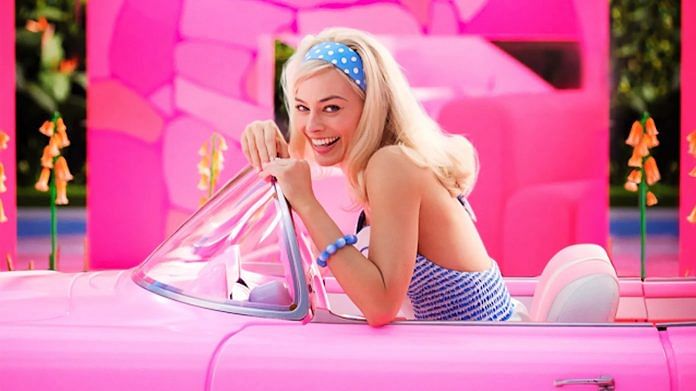Greta Gerwig’s Barbie is proof that no matter how much you bend the doll, or change the way she looks and feels, she will never truly belong to women.
Barbie the movie is a lot like Barbie the doll — pretty, superficial, and hungry to lap up new trends without actually doing the work. Over the decades, Barbie has tried to convince us she’s changing. But tweaking isn’t transforming. The movie is one more modification, not a radical 21st-century makeover.
The Academy Award-nominee director, Gerwig is famous for making movies rooted in complexities of womanhood. And that’s why when she was roped in to write and direct the Mattel X Warner Bros big-budget live action film, it was expected to capture the zeitgeist. But apart from clever digs at male stupidity, Gerwig–the auteur–seems to be missing from the 2023 Barbie movie. Perhaps when two big corporations ‘allow’ and fund you to break the mould, you can only go so far. Even feminism becomes a product to sell. Just slap a tired monologue on how difficult it is to live in a male-dominated world and there you have it–a pink fever dream, a campy ‘subverted’ Barbie.
The doll became an astronaut four years before Neil Armstrong landed on the moon in 1969. She is now also a Black president, doctor, Nobel prize winner, physicist, queer, and whatnot. She sold the deception of representation and a lie that “girls can do anything they want”. It was never about what a woman is, what she thinks or says, but how she looks. Such is the rigidity of Barbie’s plastic world.
“Let’s just say that if this film were one of the dolls in Gerwig’s Barbieland, she would be called Movie Barbie,” critic Rahul Desai writes about the film. The Movie Barbie is just as fake and annoying as any other doll but she demands to be taken seriously because she claims to know ‘what’s it like to be a woman’. The joke is ultimately on us because we went looking for meaning in her pink outfit.
Also read: Don’t dismiss ‘Barbenheimer’ as a fleeting social media trend—it’s a genius marketing lesson
Real Barbie vs real woman
What is it about the American doll that makes us so invested even in our rejection and disgust of her? Claudia, a nine-year-old rebel narrator and protagonist of Toni Morrison’s ‘The Bluest Eye’, despises the white-skinned doll and dismembers it (like most girls who even love the doll do). But she also hates herself because she knows she will never be that ‘beautiful’.
Young women’s hatred for whatever Barbie represents is as old as the doll’s existence. Mattel manufactured the first Barbie in 1959. It was created by Ruth Handler, who was inspired by a German doll named Bild Lili. It’s not a secret that Bild Lili was a sex toy popular among men. Barbie’s soft and slightly bendable plastic body with unrealistic proportions is a male imagination. It makes young girls hate themselves and the doll. But Barbie is not going anywhere.
From Barbie in the Nutcracker (2001) to Barbie: Skipper and the Big Babysitting Adventure (2023) to Gerwig’s live action–43 movies on Barbie have been released in the last couple of decades. There’s also a big library of TV shows and books on the doll. The legacy of Barbie, however problematic, lives on.
Andrea Blaugrund Nevins’ documentary Tiny Shoulders: Rethinking Barbie (2018) has a scene where female employees of Mattel are overjoyed to see the redesigned mockups of Barbies. One of them is so happy that she says, “It’s like Christmas morning.” Barbie’s outfits, her hair, her tiny shoes and the colour hot pink capture the imagination of little women.
Mattel has done everything to feed that imagination. To counter the criticism, the toy company started diversifying Barbie’s resume and her body type. Barbie became part of larger debates on feminism and the female body. With every new trend in the real world, Barbieland expanded.
Gerwig’s Barbie is also an expansion of that world. The ‘stereotypical Barbie’ (played by Margot Robbie) has become existential. The writers, Gerwig and Noah Baumbach, make a case for death-thinking Barbie in the dreamy world. The film also mirrors (read: literally copies) the predicament of modern women who are struggling to exist in the in-betweens. There’s also Ken who is now, after almost 62 years of his existence, feeling an identity crisis. It takes from the current discourse on lost men of this generation.
The film ends up giving Mattel possibly the most profitable line of Barbie in 2023—one who wears Birkenstock, ties her hair loosely and pairs it all with a drearily dull brown jacket. Now, she’s a ‘real woman’.



